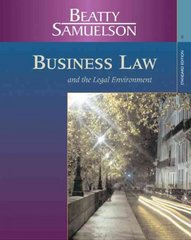Question
1. The equilibrium price and level of real domestic output occur when..................... A. The aggregate demand and supply curves intersect B. Real domestic output is
1. The equilibrium price and level of real domestic output occur when..................... A. The aggregate demand and supply curves intersect B. Real domestic output is at its maximum level C. There is full employment D. Export equal imports
2. The aggregate demand curve ....................................... A. slopes upwards because higher price level will raise domestic output B. slopes downward because production costs decrease as output increases C. is perfectly inelastic D. None of the above
3. Which of the following statements is correct? A. There is a transaction demand for money, due to uncertainty about the receipt of future income. B. The transaction demand for money is not related to income. C. Speculative demand for money varies inversely with interest rate. D. The precautionary demand for money is affected by the opportunity cost of holding M1 balances.
4. According to the Keynesian theory, a contraction in money supply tends to ........................ the interest rate, and ............................... investment, aggregate demand, prices, real GDP and employment. A. decrease; decrease B. decrease; increase C. increase; decrease D. increase; increase
5. The central bank should implement contractionary monetary policy to reduce inflation by A. increasing the discount rate B. decreasing the discount rate C. decreasing the required reserve ratio D. buying government securities in open market operations
6. The goal of expansionary monetary policy is A. To have an equal distribution of income B. To decrease interest rates C. To decrease price levels D. To increase the level of aggregate output
7. Which of the following is the most appropriate fiscal policy for recession? A. Decreases in government spending B. Increases in interest rate C. Decreases in tax rate D. Increases in tax rate
8. The discretionary fiscal policy is ...................................................... A. Increasing the money supply in the economy B. The changes in government expenditure and taxes to control unemployment or inflation C. The changes in government expenditure and taxes which occur automatically without any government action D. None of the above
9. "It is suggested that an industry must be protected at the initial stages of its growth, so that ..." Which of the following completes this infant industry argument for protectionism? A. Firms can be protected from subsidized foreign competition B. Domestic producers can attain the economies of scale to allow them to compete in world markets C. There will be adequate supplies of crucial resources, in case they are needed for national defense D. None of the above
10. An excess demand for ringgit in the floating exchange rate system will lead to ................................. for the ringgit. A. a depreciation B. an appreciation C. a long - term surplus D. a long - term shortage
Step by Step Solution
There are 3 Steps involved in it
Step: 1

Get Instant Access to Expert-Tailored Solutions
See step-by-step solutions with expert insights and AI powered tools for academic success
Step: 2

Step: 3

Ace Your Homework with AI
Get the answers you need in no time with our AI-driven, step-by-step assistance
Get Started


